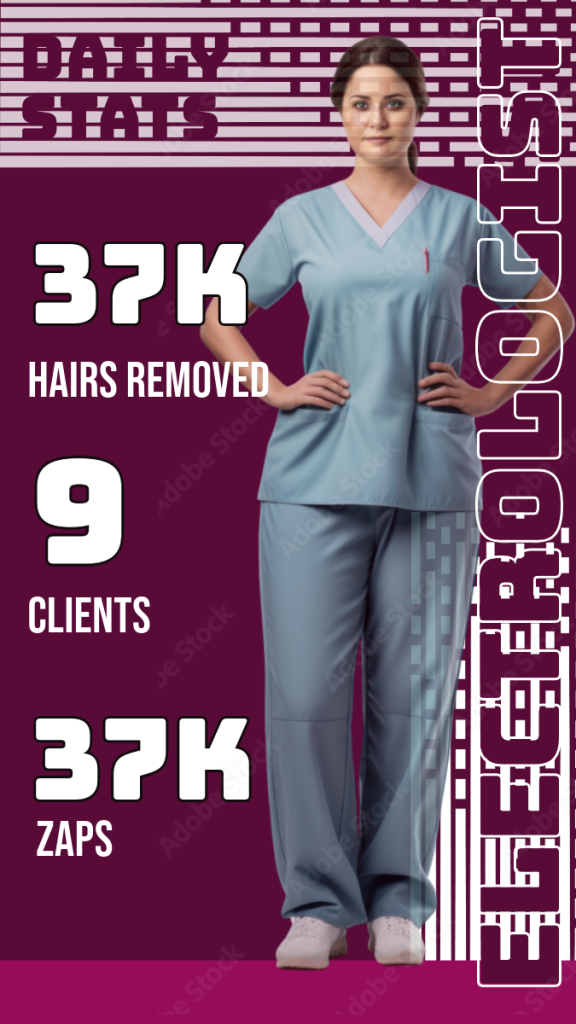- Future of Electrology
- 2020s
- 2010s
- 2000s
- 1980s
- 1950s
- 1940s
- 1920s
- 1880s–1900s
- 1875
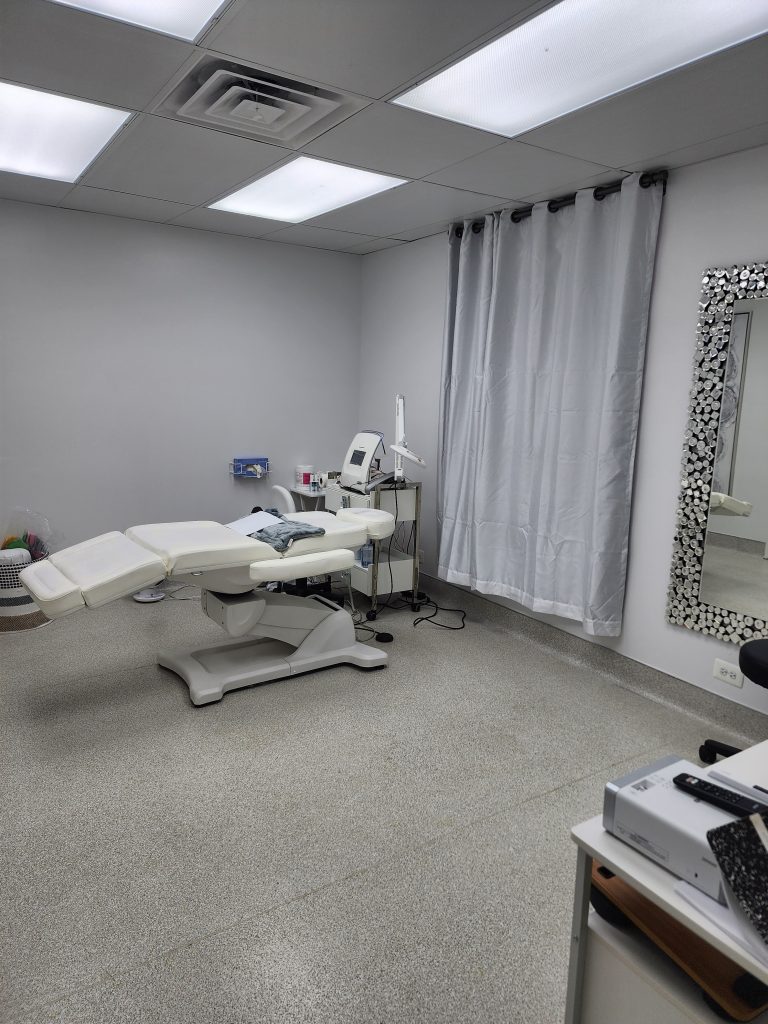
ElectroPro: Powering the Future of Electrology |
ElectroPro’s groundbreaking innovation in the administration and management of school learning and clinical practice is redefining the future of electrology. By integrating modern educational tools and operational efficiency, ElectroPro empowers institutions and professionals to meet the evolving demands of the field with precision and ease.
Electrology is a highly specialized, science-based profession rooted in over a century of innovation. As the only method of permanent hair removal recognized by the FDA, it continues to gain credibility and demand across medical, cosmetic, and wellness industries.
Today’s electrologists operate in state-regulated environments, using advanced digital epilators, multi-modality treatments (thermolysis, galvanic, blend), and rigorous safety protocols. Education has evolved to meet contemporary needs, with hybrid learning models that combine online theory with supervised, in-person clinical training—fully aligned with state board requirements and professional standards.
Looking ahead, the future of electrology centers on continued growth, accessibility, and integration:
1. Software-driven education and clinic management, led by ElectroPro, will streamline student learning, ensure regulatory compliance, and enhance daily operations for schools and licensed professionals.
2. National licensing efforts aim to establish consistent standards across all 50 states.
3. Technological advancements will continue to improve treatment precision, administrative efficiency, and client comfort.
4. Interdisciplinary collaboration with dermatologists, endocrinologists, and gender-affirming care providers is expanding electrology’s role in holistic healthcare.
5. Public education and digital outreach are increasing awareness of electrolysis as the only FDA-recognized method of permanent hair removal—offering long-term benefits over temporary solutions.
Finally, as body autonomy and inclusive care become national priorities, electrology is uniquely positioned to serve individuals of all genders, hair types, and medical needs—with permanence, safety, and professionalism at its core.
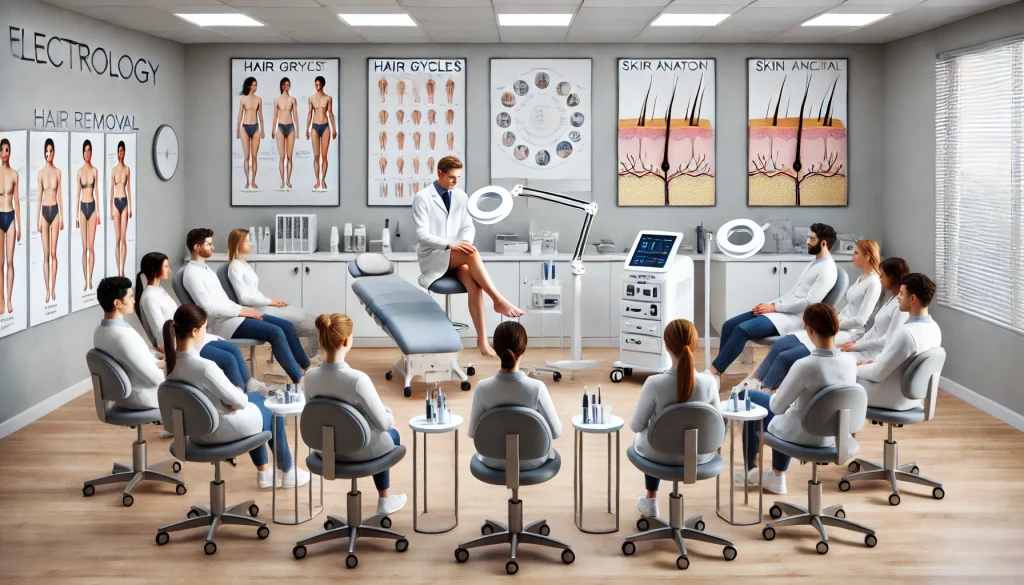
In the 2020s, electrology education has embraced hybrid learning models, blending online theoretical instruction with in-person practical training. This shift has been accelerated by technological advancements and the need for flexible learning options.
Key Developments:
- Online Theory Instruction: Institutions like the Illinois Dedicated Electrology Academy (IDEA) offer programs where approximately 50% of the curriculum, covering topics such as anatomy, dermatology, and electrology techniques, is delivered online.
- In-Person Practical Training: The remaining 50% of the program focuses on hands-on experience, requiring students to attend on-site sessions to practice and refine their skills under professional supervision
- Flexible Scheduling: These hybrid programs often feature open enrollment and self-paced learning, allowing students to balance their studies with personal and professional commitments.
- State Approval: Such hybrid models are increasingly recognized and approved by state licensing boards, ensuring that graduates meet the necessary requirements for professional practice.
This evolution in electrology education reflects a broader trend towards adaptable and accessible learning environments, preparing students effectively for licensure and careers in the field.

The 2010s marked a pivotal decade for the professionalization of electrology across the United States. During this time, several states—particularly those with previously limited or outdated regulations—began to expand and modernize their licensing laws for electrologists. These legislative updates aimed to improve public safety, ensure standardized training, and establish electrology as a distinct, regulated healthcare and aesthetics profession.
States such as New York, Florida, and California reinforced strict requirements for licensure, while others moved to recognize electrology as separate from cosmetology or esthetics, requiring dedicated certification and state-approved training.
In tandem with these regulatory changes, the demand for formal electrology education grew significantly. New training academies emerged, and existing schools began to revise and expand their curricula to align with state board standards. Programs became more structured, often requiring:
- A minimum of 320 to 600 clock hours
- Training in multiple modalities (thermolysis, galvanic, blend)
- Anatomy, safety, and infection control modules
- Clinical hands-on experience under supervision
Accrediting bodies and professional associations, such as the American Electrology Association (AEA) and state licensing boards, played a more active role in shaping education standards and offering continuing education opportunities.
This decade also saw an increase in public awareness of electrology as the only FDA-approved method for permanent hair removal, contributing to greater demand for licensed practitioners and further legitimizing the field.
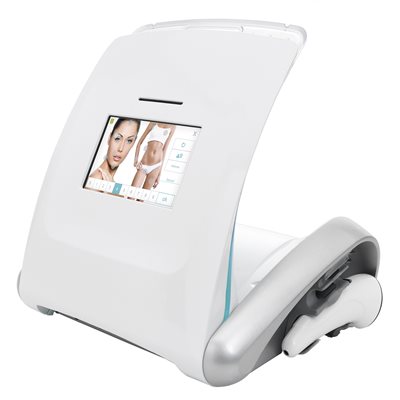
The 2000s ushered in a new era of precision and personalization in electrology with the widespread adoption of digital and programmable epilators. These next-generation devices—led by innovative brands like Apilus, Clareblend, and Instantron—offered an unprecedented level of treatment customization and user interface control.
Unlike earlier analog or semi-digital machines, the new devices were built with advanced microprocessors that could instantly adjust output based on skin type, hair texture, and treatment area. Electrologists could select from an array of pre-set programs or customize their own settings, resulting in more effective treatments with less discomfort and faster results for clients.
One of the most transformative innovations of this period was Apilus' development of high-frequency epilators, such as those operating at 13.56 MHz and 27.12 MHz, which significantly reduced discomfort by delivering ultra-fast energy pulses with pinpoint accuracy. These systems also introduced modalities like MicroFlash, PicoFlash, and Synchro, designed to target different follicle depths and hair types.
In addition to technical performance, modern epilators of the 2000s also featured:
- Touchscreen interfaces for intuitive control
- Client file storage and treatment logs
- Integrated safety features, such as automatic shutdown and skin-response feedback
- Multi-language and internationalization options, allowing broader global adoption
These innovations made it easier for electrologists to deliver consistent, high-quality treatments and paved the way for advanced training standards, digital recordkeeping, and elevated professional practice across the industry.
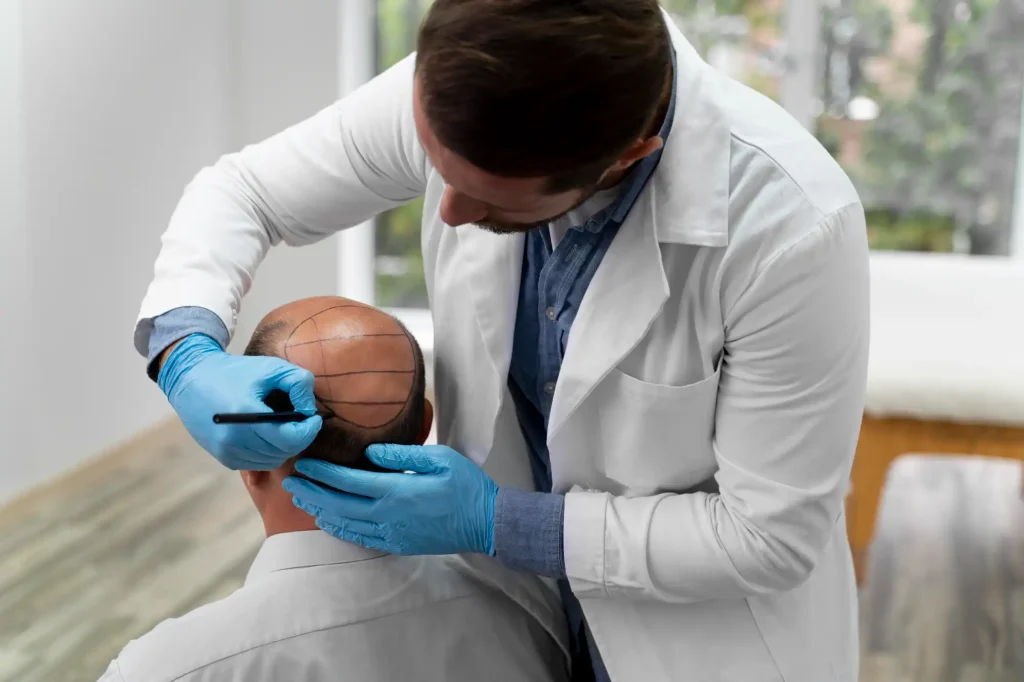
The 1980s marked a technological turning point in the field of electrology with the introduction of computerized epilators. Prior to this, most epilators were analog, offering limited control over treatment parameters. The arrival of microprocessors and digital technology transformed the landscape, allowing for greater precision, customizable settings, and improved client comfort.
These computerized devices enabled electrologists to fine-tune treatment variables such as intensity, timing, and pulse duration with a level of accuracy that was previously unattainable. Some systems introduced automatic programming based on skin type, hair texture, and treatment area, making treatments both more efficient and safer for diverse clients.
The enhanced accuracy also led to greater consistency in results, and for the first time, epilators could offer multi-mode capabilities (e.g., switching between thermolysis, galvanic, and blend methods) in a single unit. Additionally, many machines incorporated client tracking systems, session counters, and treatment logs—features that helped establish modern professional standards.
Brands like Apilus, Clareblend, and Instantron began producing units that set the gold standard in the industry, with some models still influencing the design of today’s advanced epilators.
The 1980s were pivotal in elevating electrology from a manual, technique-driven practice to a technology-enhanced discipline, increasing both the credibility and accessibility of permanent hair removal services.
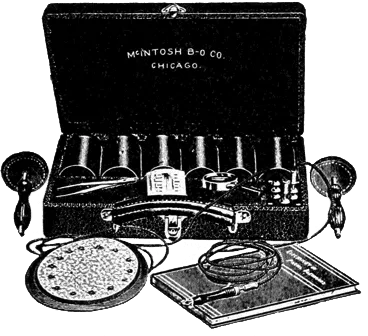
The 1950s saw a significant leap forward in electrology with the widespread development and adoption of thermolysis, also known as shortwave diathermy. Unlike galvanic electrolysis, which relies on chemical destruction of the hair follicle using direct current (DC), thermolysis uses alternating high-frequency radio waves (AC) to produce heat at the tip of a fine probe inserted into the follicle. This heat coagulates and destroys the follicular tissue, preventing future hair growth.
Thermolysis revolutionized the industry by offering a much faster treatment process. Where galvanic electrolysis could take up to a minute or more per hair, thermolysis could treat a hair in a fraction of a second, allowing electrologists to treat significantly more follicles in a single session. This development was especially beneficial for larger areas like the face, arms, and legs, where time-efficiency was critical.
The technology also became more accessible during this decade, with companies like Silhouet-Tone, Clareblend, and Instantron (in later years) contributing to the evolution of thermolysis-capable epilators. These early thermolysis machines were analog but increasingly precise, offering practitioners greater control over timing, intensity, and comfort.
The introduction of thermolysis also led to new training standards and techniques, and many electrologists began to specialize in or combine this faster method with traditional galvanic treatment—eventually contributing to the widespread popularity of the Blend Method.
This decade marked a turning point in making electrolysis more scalable, commercially viable, and client-friendly, laying the groundwork for modern electrology practice.
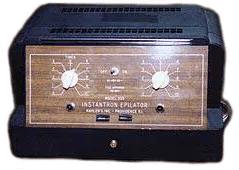
In the 1940s, Paul Kree, a key figure in the advancement of electrology, popularized the Blend Method, a major technological and procedural innovation in permanent hair removal. This technique combines the two dominant modalities of the time: galvanic electrolysis (which uses direct current to chemically destroy hair follicles) and thermolysis (which uses high-frequency alternating current to generate heat and coagulate follicular tissue).
While both methods were effective on their own, each had limitations. Galvanic electrolysis was highly reliable but slow, and thermolysis was faster but sometimes less effective on coarse or deeply rooted hairs. The Blend Method merged the strengths of both: chemical destruction from galvanic current and thermal coagulation from thermolysis, resulting in a more efficient, versatile, and effective treatment for a wider variety of hair types and skin conditions.
Paul Kree’s contribution was not just technical but also institutional—his company, The Paul Kree Institute of Electrolysis, became a prominent training ground and equipment supplier. He helped standardize the blend technique, making it more accessible to practitioners across the U.S. and beyond.
This innovation elevated the professional standing of electrologists, allowed for more consistent results, and laid the foundation for the modern electrology curriculum still taught today.
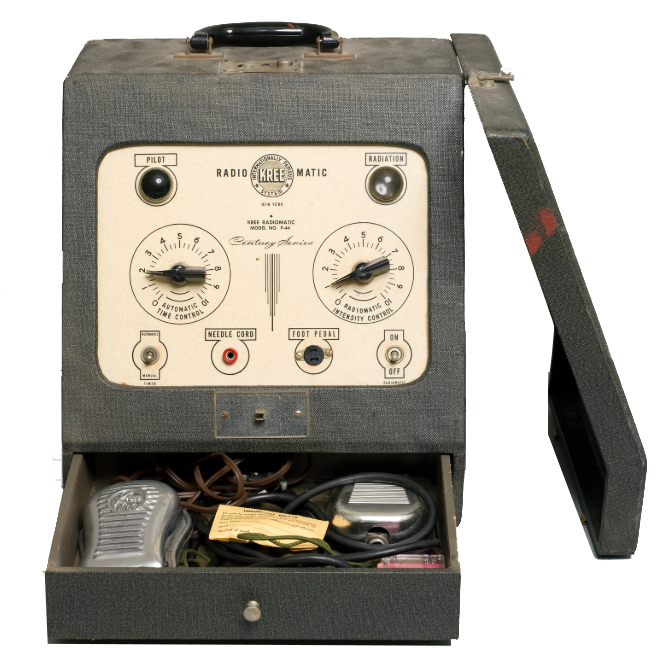
The 1920s marked a major advancement in electrology with the introduction of the multiple-needle galvanic technique, significantly increasing both efficiency and treatment coverage. While the original single-needle method was effective, it was time-consuming—each hair follicle had to be treated one at a time. This new approach allowed electrologists to insert several sterile probes simultaneously into different hair follicles and apply direct current (DC) to all of them at once. By delivering electrical current through multiple needles, more follicles could be treated during a single session, greatly enhancing productivity. One of the key figures associated with refining and promoting this method was Paul Kree, a German-American electrologist and innovator who helped commercialize the multiple-needle system. His company, The Paul Kree Institute of Electrolysis, not only sold specialized galvanic equipment but also began offering formal training, laying the groundwork for professional electrology education in the United States. Although the procedure still required considerable skill, the multiple-needle technique became the gold standard for permanent hair removal for many decades, particularly for large treatment areas. It also reinforced electrolysis as a serious career path, elevating the industry’s standards and helping define the role of the modern electrologist.
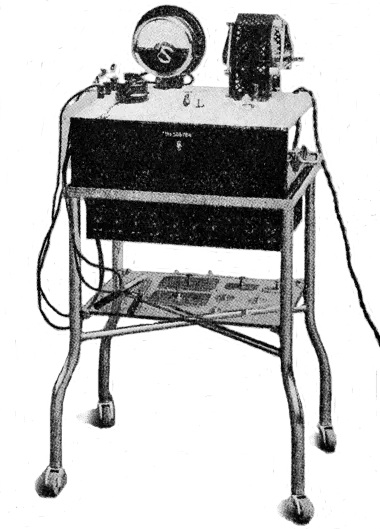
Following Dr. Charles Michel’s groundbreaking work in 1875, the use of electrolysis began expanding beyond medical treatment into the realm of cosmetic hair removal. Physicians and practitioners began to recognize that the same galvanic method used to treat trichiasis could also be used to remove unwanted facial and body hair, especially for women suffering from conditions like hirsutism.
During this period, commercial electrolysis devices started to emerge. These early units were large, analog, and typically powered by wet-cell batteries or primitive electrical transformers. They required technical skill to operate and were most often used in medical or quasi-medical environments. Nonetheless, a small but growing number of professionals—especially women—entered the field and offered services in private studios or physicians' offices.
The social stigma surrounding excess hair, particularly on women, played a major role in driving demand. Electrolysis was increasingly seen not just as a medical remedy but as a personal and cosmetic enhancement tool, leading to wider adoption and professional interest.
This era marked the beginning of professional electrolysis practice, with early practitioners forming the roots of what would become a recognized industry.
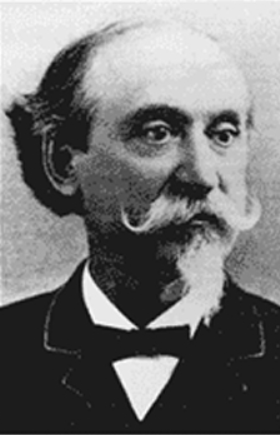
Dr. Charles E. Michel, an ophthalmologist practicing in St. Louis, Missouri, made medical history by using galvanic electrolysis to permanently remove ingrown eyelashes (trichiasis), a painful condition that can cause corneal damage and vision loss. By inserting a fine needle into the hair follicle and applying a direct electrical current (DC), Michel successfully destroyed the follicle's ability to produce hair—introducing the world’s first documented use of electricity for permanent hair removal.
He published his findings in the St. Louis Clinical Record in 1875, describing both the method and the apparatus used. Although his intent was strictly therapeutic, his success laid the foundation for what would eventually become modern electrology, turning a clinical ophthalmic procedure into a cosmetic treatment recognized globally.
This milestone marks the official birth of electrology as both a scientific and aesthetic discipline.
About Us
Who we Are?
At ElectroPro, we’re revolutionizing Electrology education with an all-in-one software built for institutions, educators, and students. Our platform simplifies learning, streamlines management, and enhances collaboration — all while shaping the future of Electrology training. Whether you’re teaching or learning, ElectroPro empowers success every step of the way.
Join us in advancing Electrology education like never before!
0
Hair Removed
0
Clients
0
Zaps
